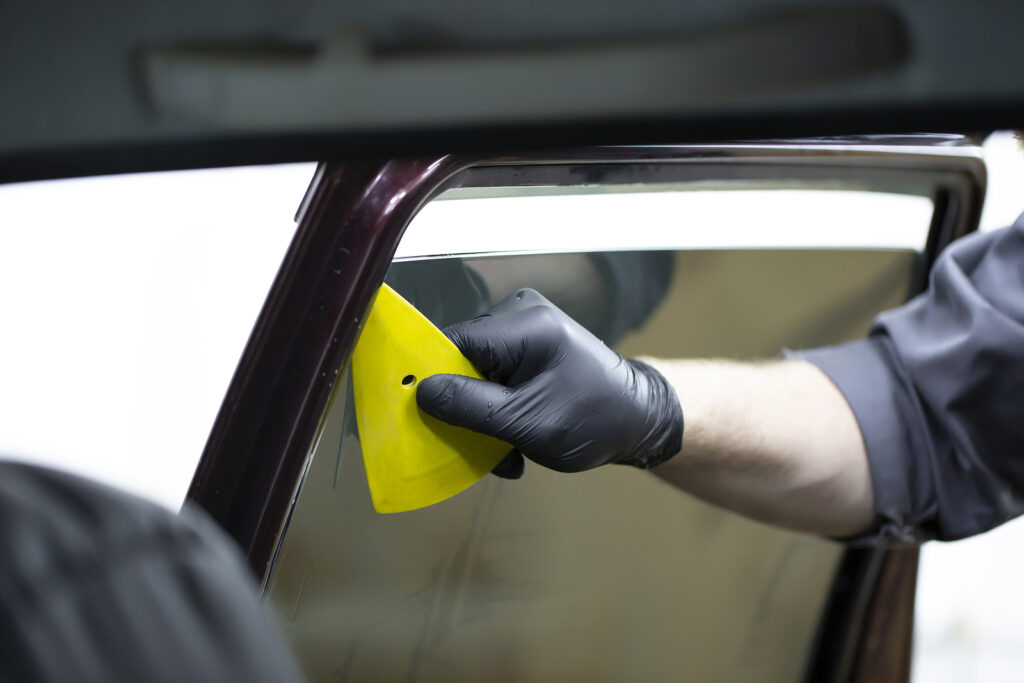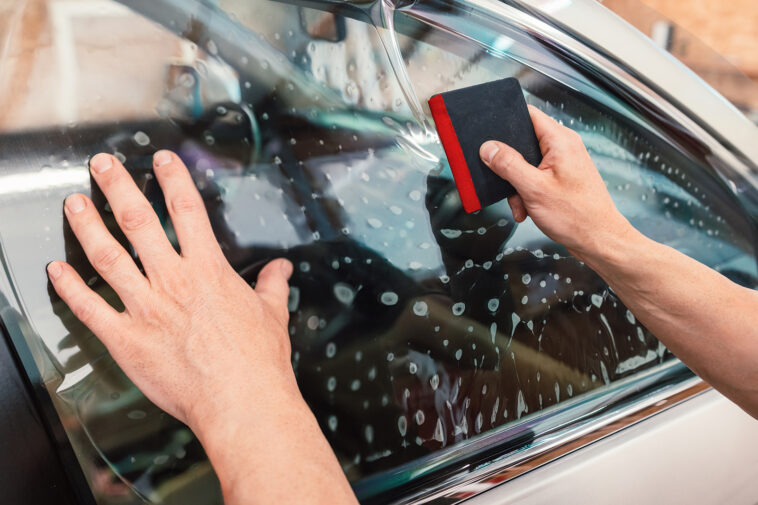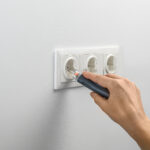DIY Window Tint
Window tinting has seen a surge in popularity, whether it's for your vehicle or your home. It not only enhances the aesthetics of these spaces but also offers functional benefits such as privacy enhancement, glare reduction, and temperature control. However, a common dilemma many people face is whether taking the do-it-yourself (DIY) route for window tinting is truly worth the effort. In this in-depth guide, we will explore the myriad advantages and disadvantages of DIY window tinting to empower you to make an informed decision.
Understanding DIY Window Tint
DIY window tinting is a popular method for enhancing privacy, reducing glare, and adding a sleek aesthetic to windows in homes and vehicles. This approach empowers individuals to take control of their tinting projects, and it involves the use of specially designed tinting kits.
These kits offer a comprehensive solution, including tint film, essential tools, and step-by-step instructions, making the process accessible to a diverse range of individuals, from homeowners seeking added privacy and energy efficiency to car enthusiasts aiming to upgrade their vehicle's appearance.
These DIY kits are readily available both in physical stores and through online retailers, providing a cost-effective alternative for those interested in window tinting without the need for professional assistance.
Types of DIY Window Tint
There are several types of DIY window tint options available for those looking to enhance privacy and reduce glare in their vehicles or homes. These options cater to varying levels of convenience and customization:
Pre-Cut Tint Kits
Pre-cut tint kits are designed with precision to match the windows of specific car makes and models. These kits come with tint pieces that are already cut to the right size and shape for easy installation. They are a convenient choice, as they reduce the need for extensive cutting and trimming, ensuring a hassle-free tinting process.
Rolls of Tint Film
Some DIY kits offer rolls of tint film, providing greater flexibility for customization. With these kits, you can measure, cut, and trim the tint film to fit your windows precisely. This flexibility allows you to create a customized look that matches the size and shape of your car or home windows. However, it does require more effort and precision during installation.
Spray-On Tints
For those seeking a unique application method, spray-on tint products are available. These products involve applying a liquid tint solution directly onto the glass surface. While they offer creative application options, they can be more challenging to work with and may require additional skills to achieve a uniform and desirable tint finish. Spray-on tints are suitable for those who are experienced in DIY tinting projects and are willing to invest time and effort for a distinctive result.

Benefits of DIY Window Tinting
- Cost Savings: The Budget-Friendly Approach: A prominent factor that attracts individuals to DIY window tinting is the potential for cost savings. Hiring a professional tinting service can often be quite expensive, particularly if you have multiple windows to tint. In contrast, DIY kits are typically more budget-friendly, making them an appealing choice for those looking to save a substantial amount of money on their window tinting project.Furthermore, when you embark on a DIY project, you have control over the materials and tools you use. This allows you to find options that fit your budget, ensuring you don't break the bank.
- Convenience: Flexibility in Timing and Choice: DIY window tinting kits are widely available, both in physical stores and online. This accessibility makes them highly convenient for homeowners and car enthusiasts. You can purchase a DIY kit at your own pace, without the pressure of adhering to a professional service's schedule. You have the freedom to decide when and where to start your project, tailoring it to your convenience.
- Learning Experience: Gaining Knowledge and Skills: Undertaking a DIY window tinting project offers a valuable learning experience. It provides an opportunity to acquire knowledge about the window tinting process, the various types of tint films available, and the techniques involved. This knowledge can be advantageous if you plan to tint more windows in the future or if you want to troubleshoot any issues that may arise with your tint.Additionally, as you engage with the DIY project, you build your skills and confidence in tackling home improvement tasks, which can be empowering and fulfilling.
- Customization: Tailoring the Tint to Your Taste: DIY window tinting kits come in a range of tint shades and styles, giving you the freedom to customize the appearance of your windows according to your preferences. This level of personalization may not always be readily available with professional services, which often offer limited choices.Whether you desire a sleek, modern look or a classic, timeless appearance for your windows, DIY kits can help you achieve the exact aesthetic you have in mind.
- Sense of Accomplishment: Pride in a Job Well Done: Successfully completing a DIY window tinting project can instill a deep sense of accomplishment and pride. Witnessing the tangible results of your hard work on your vehicle or home can be immensely satisfying. It not only improves the appearance and functionality of the space but also boosts your confidence in taking on other DIY endeavors.This sense of achievement can foster a greater connection to your home or vehicle, as you've personally contributed to its enhancement.
The Pros and Cons of Window Tint
Pros of Window Tint:
- Heat Reduction: Window tinting can significantly reduce the amount of heat that enters a vehicle or building. This is especially beneficial in hot climates, as it helps keep interiors cooler, reducing the need for excessive air conditioning and improving overall comfort.
- UV Protection: Tinted windows block a significant portion of harmful ultraviolet (UV) rays. This UV protection helps prevent the fading and damage of interior upholstery, furniture, and flooring, and also reduces the risk of skin cancer and sunburn.
- Glare Reduction: Tinted windows can reduce glare from the sun, headlights, and reflective surfaces, enhancing visibility and safety while driving or working in well-lit environments.
- Privacy and Security: Tinted windows offer privacy by preventing outsiders from easily seeing into the vehicle or building. This can deter theft and vandalism, protect personal belongings, and provide a sense of security.
- Energy Efficiency: For buildings, window tinting can contribute to energy efficiency by reducing the need for air conditioning during hot months and heating during cold months. This can result in lower energy bills and reduced carbon footprint.
- Aesthetic Appeal: Tinted windows can enhance the aesthetic appearance of a vehicle or building, giving them a sleek and modern look.
Cons of Window Tint:
- Reduced Visibility: Window tinting can reduce visibility, especially at night or in low-light conditions. Overly dark tints can compromise safety by limiting the driver's ability to see clearly.
- Legality Issues: Window tinting laws vary from place to place, and some jurisdictions have strict regulations regarding the darkness of tints. Using tints that are too dark can lead to fines and the need to remove or replace the tint.
- Interference with Electronics: Some window tints may interfere with electronic devices such as GPS, cell phones, and radio signals. Metallic-based tints, in particular, can disrupt these signals.
Tips for a Successful DIY Window Tinting Project
If you decide that DIY window tinting aligns with your preferences and circumstances, here are some detailed tips to help you achieve a successful installation:
Prepare and Clean the Surface: A Prerequisite for Quality
Before applying the tint film, ensure the window surface is thoroughly cleaned. Remove any dirt, dust, or debris, as they can create imperfections or bubbles during installation. Use a lint-free cloth and an appropriate cleaning solution to achieve a pristine surface.
Follow Instructions: A Step-by-Step Approach
Carefully read and follow the instructions provided with your chosen DIY kit. Pay close attention to recommended techniques and tools, as they are specific to the product you are using. Following the instructions diligently is crucial for a smooth and successful installation.
Practice: Hone Your Skills
If you are new to window tinting, consider practicing on a small window or a piece of glass before tackling larger windows. This allows you to become familiar with the techniques and develop the necessary skills without the pressure of a full-scale installation.
Work in Ideal Conditions: The Environment Matters
Choose a clean, dust-free environment for your DIY window tinting project. A well-ventilated area is also important, as it allows the tint film to adhere properly. Avoid working in extremely windy or hot conditions, as they can make the installation more challenging.
Use Quality Materials: Invest for Longevity
Invest in a high-quality window tint kit with positive reviews and a reputable brand. Quality materials are more likely to provide a better result and greater longevity. While it may be tempting to cut costs on materials, it's often worth paying a bit more for a superior product.

FAQs about DIY Window Tinting
1. Is DIY window tinting difficult?
DIY window tinting can be challenging, especially for beginners. Achieving a professional finish without imperfections requires patience, attention to detail, and practice. While it may seem daunting initially, many people successfully tint their windows with the right tools, materials, and dedication.
2. Are DIY window tinting kits as good as professional services?
The quality of the results in a DIY project largely depends on your skill level and the materials you choose. Some DIY kits offer high-quality tint films that can be on par with professional services. However, achieving a professional finish may be more challenging for beginners. Professionals bring experience and expertise to the table, ensuring a flawless installation.
3. Can I remove DIY window tint if I'm not satisfied with the results?
Yes, you can remove DIY window tint if you're not satisfied with the results. Most tint films are designed to be removable. You can use a steamer or a window tint removal solution to soften the adhesive and carefully peel off the tint. Keep in mind that the removal process can be time-consuming and may require patience.
4. How long does DIY window tinting last?
The lifespan of DIY window tinting depends on several factors, including the quality of the tint film, the installation process, and environmental conditions. High-quality tint films that are installed correctly can last for several years or even a decade. Cheaper films may degrade more quickly. Regular maintenance, such as cleaning with a mild solution and avoiding abrasive materials, can also extend the lifespan of the tint.
5. Are there legal restrictions on DIY window tinting?
Yes, there are legal restrictions on window tinting in many regions. Laws vary from place to place, so it's essential to research and understand the regulations in your area before starting a DIY window tinting project. Tint that is too dark can result in fines or the requirement to remove the tint. Always ensure that your DIY project complies with local laws.
6. Can DIY window tinting save energy costs?
DIY window tinting can contribute to energy savings by reducing heat transfer through windows. Tinted windows can help keep your space cooler in the summer, reducing the need for air conditioning. However, the energy-saving benefits may vary depending on the quality of the tint and the climate in your area.
7. What tools and materials do I need for DIY window tinting?
The tools and materials you need for DIY window tinting typically include a window tint kit (which includes the tint film), a utility knife, a squeegee, a heat gun or hairdryer, a spray bottle with a solution (usually a mixture of water and a drop of mild soap), and a clean lint-free cloth. Some kits may come with additional tools or instructions specific to the brand.
8. Can I tint curved or irregularly shaped windows myself?
Tinting curved or irregularly shaped windows can be more challenging than flat ones. It requires extra care and patience. If you are a beginner, it's recommended to practice on flat windows first to build your skills before attempting curved or complex surfaces. Alternatively, consider seeking professional help for such windows.
9. Will DIY window tinting affect my vehicle's or home's warranty?
Installing DIY window tint may void warranties on your windows or vehicle, depending on the manufacturer's policies. It's essential to check your warranty terms and conditions before proceeding with DIY tinting. If maintaining your warranty is crucial, you may want to consider professional tinting services.
10. Can DIY window tinting be done in cold or hot weather?
The ideal conditions for DIY window tinting are moderate temperatures with low humidity. Extreme cold or hot weather can make the installation more challenging. In cold weather, the tint film may be less pliable, while in hot weather, it can become more challenging to prevent bubbles. If you must tint in extreme conditions, take extra precautions, and be prepared for a potentially more demanding process.
Conclusion
In conclusion, the decision of whether DIY window tinting is worth it is a multifaceted one that depends on your specific circumstances, skill level, and personal preferences. While it offers potential cost savings, customization options, and a sense of accomplishment, it also comes with significant challenges, such as the need for skill and precision.
Before embarking on a DIY window tinting project, carefully weigh the benefits and drawbacks outlined above. If you're confident in your abilities and willing to invest the time and effort required, a successful DIY window tinting project can be immensely rewarding. However, if you have reservations about the installation process or seek a flawless, professional finish, it may be worth considering the services of a professional window tinting provider.
Ultimately, whether DIY window tinting is worth it is a decision only you can make based on your unique situation and goals. Weigh the pros and cons, consider your skill level, and choose the path that aligns best with your needs and aspirations.
Sources
https://www.ncbi.nlm.nih.gov/pmc/articles/PMC2892392/




